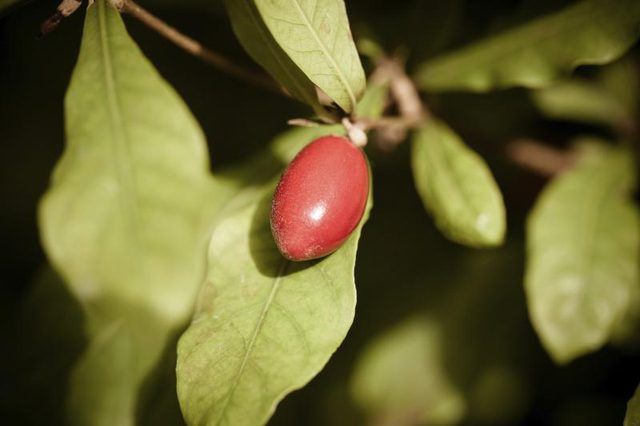Bulbs
Flower Basics
Flower Beds & Specialty Gardens
Flower Garden
Garden Furniture
Garden Gnomes
Garden Seeds
Garden Sheds
Garden Statues
Garden Tools & Supplies
Gardening Basics
Green & Organic
Groundcovers & Vines
Growing Annuals
Growing Basil
Growing Beans
Growing Berries
Growing Blueberries
Growing Cactus
Growing Corn
Growing Cotton
Growing Edibles
Growing Flowers
Growing Garlic
Growing Grapes
Growing Grass
Growing Herbs
Growing Jasmine
Growing Mint
Growing Mushrooms
Orchids
Growing Peanuts
Growing Perennials
Growing Plants
Growing Rosemary
Growing Roses
Growing Strawberries
Growing Sunflowers
Growing Thyme
Growing Tomatoes
Growing Tulips
Growing Vegetables
Herb Basics
Herb Garden
Indoor Growing
Landscaping Basics
Landscaping Patios
Landscaping Plants
Landscaping Shrubs
Landscaping Trees
Landscaping Walks & Pathways
Lawn Basics
Lawn Maintenance
Lawn Mowers
Lawn Ornaments
Lawn Planting
Lawn Tools
Outdoor Growing
Overall Landscape Planning
Pests, Weeds & Problems
Plant Basics
Rock Garden
Rose Garden
Shrubs
Soil
Specialty Gardens
Trees
Vegetable Garden
Yard Maintenance
How to Grow Miracle Berry
How to Grow Miracle Berry. Miracle berry (Synsepalum dulcificum) appears to turn sour foods into sugary ones. In reality, after you eat the berry, a protein called miraculin tricks your taste buds into registering tart foods consumed shortly thereafter as sweet. Native to western Africa and perennial only in U.S. Department of Agriculture plant...

Miracle berry (Synsepalum dulcificum) appears to turn sour foods into sugary ones. In reality, after you eat the berry, a protein called miraculin tricks your taste buds into registering tart foods consumed shortly thereafter as sweet. Native to western Africa and perennial only in U.S. Department of Agriculture plant hardiness zones 10b through 11, miracle berry is usually raised as a houseplant. Growing to 18 feet in the landscape, but only 5 to 6 feet in a large container, the shrub exhibits glossy 2-inch leaves and 1/4-inch white flowers, followed by 3/4- to 1-inch-long seedy red berries.
Sun and Soil
Miracle berry prefers acidic soil, with a pH between 4.5 and 6.5, and partial sun. If growing your plant in a container, pot it in a mix of 1 part peat moss and 1 part pine bark soil conditioner or perlite. Place it on a windowsill where it receives at least four hours or more of sunlight per day and where the temperature doesn't fall below 60 degrees Fahrenheit. When re-potting the plant, make sure you don't damage its roots and that those roots are positioned at the same level as they were in the previous container. In tropical climates, where the tree can grow in the ground, it needs acidic, sandy loam in a partially shaded position 12 feet away from buildings or other plants.
Damp and Diet
To maintain the acidity of your miracle berry’s soil, moisten it with distilled water or rainwater rather than tap water, which can be alkaline. Water that soil often enough to keep it lightly damp but never soggy. For an indoor plant, add 1/4 teaspoon of a mild all-purpose plant food such as 7-9-5 to 1 gallon of water every other time you water from spring through fall. Feed an outdoor miracle berry by sprinkling a little 8-3-9 fertilizer onto the soil around it once a month from March to October, using 1 tablespoon of the granules for each 1 foot of the plant's height.
Fruits and Flowers
A miracle berry plant can begin flowering and fruiting when it is 1 to 2 feet tall. As seedlings grow slowly, they may not bear until they are two or three years old. When an indoor plant is in bloom, brush the flowers with your hand to make sure that they get pollinated. Outdoors, insects should handle that job. The fruits generally ripen about one month to six weeks after the flowers are pollinated, with the heaviest crops appearing in spring and autumn.
Seeds and Sowing
If you wish to grow additional plants, you can find a single seed inside each berry. After eating the berries, plant the seeds while they are still damp, about 3/8 inch deep and 2 inches apart in a pot filled with a combination of 1 part seed-starting mix and 1 part sand. Keep the pot in a location with temperatures between 77 and 82 degrees F, and the seeds should sprout within two weeks to four months.